

Briefly talk about the principle of automobile wire harness layout
1. Consideration of ease of installation and feasibility of assembly process
(1) The plug-in of the wiring harness should be arranged in a position where the hand can touch, or the plug-in can be touched after simply dismantling some body parts. For plug-ins that can only be inserted and removed with one hand, the other end of the plug-in should be fixed on the body.
(2) Consider the via space of the wiring harness and the plug-in, the sealing of the via and the fixing of the plug-in, so as to meet the convenience and efficiency of threading and plug-in operation under actual conditions; such as instruments, audio, air conditioning panels, etc. with high maintenance rates For electrical equipment or switches, the rear wiring harness is reserved to a length that is easy to plug and unplug.
(3) Do not arrange plug-ins of the same type and color in nearby positions, and distinguish between plug-ins to avoid mis-insertion during assembly and damage to wiring harnesses and electrical appliances.
2. Consider the fixing and protection of the wiring harness
(1) According to the direction of the wiring harness and the specific shape of the body, the fixed points should be reasonably set. The distance between the two fixed points is generally not greater than 300mm; one fixed point can be arranged at an obtuse inflection point; right angle Inflection points should be laid out with two fixed points; avoid sharp-angled inflection points in the harness.
(2) According to the direction and size of the wire harness, reasonably select the fixing buckle and indicate its position. In the installation direction of the fixed buckle, there must be enough space to facilitate the installation and removal of the buckle.
(3) At the position of the plug-in connected to other wiring harnesses and electrical equipment, add a fixing point at a suitable position no more than 120 mm in front of the plug-in to reduce the vibration of the terminals in the plug-in. Add a fixed point at the branch of the main harness, and the fixed point is not more than 100mm away from the fulcrum.
(4) In order to maintain the clearance between the wire harness and the surroundings, a hard tube or a splint is required in some positions to ensure that the wire harness is not deformed. To ensure the directionality of the harness, some locations should use clips with positioning.
(5) When there are many plug-ins, the fixed position should be fully considered. If necessary, wire harness slots and wire harness brackets should be designed. Corrugated pipes should be used to protect the wiring harness leakage and the friction part of the body.
(6) Do not directly contact the sharp edge of the body, increase protection, avoid the sharp edge of the body from damaging the outer insulation layer of the wiring harness, fix the plug-in connected to the vibration or moving parts, and avoid the transmission of vibration on the wiring harness.
3. Avoid interfering with surrounding parts
(1) The wiring harness should be arranged along the edge and along the groove (the wiring groove designed by the body) to avoid the wiring harness being directly under pressure. Uniform clearance with pipes and reasonable clearance with surrounding and surrounding components; for example, seats should consider whether there is sufficient clearance through the wiring harness and whether it rubs against other components.
(2) When installed on vibrating or moving parts, the relevant wiring harness must have sufficient length according to the actual situation. The reserved length is determined according to the vibration amplitude of the part and the maximum movement stroke of the moving part. Make sure that the reserved length does not transmit vibrations on the wire harness or subject the wire harness to tension.
(3) The clearance with the moving parts should be determined according to the needs, such as the clearance of the wiper motor connecting rod, belt, fan, gear, cam, etc. Generally, it is required to be larger than 25 mm, and the shifting mechanism should be fully considered when it is arranged to interfere with the wiring harness.
4. Avoid high temperature areas and pipes
(1) Avoid wiring harnesses too close to high temperature areas. If unavoidable, a heat shield should be added to protect the harness (at least 80mm). For wiring harnesses without heat shields, the spacing is at least 160mm, such as high temperature components such as exhaust systems, EGR and booster systems and their associated valves. However, the wiring harness is at least 200mm away from the high temperature area of the exhaust muffler and at least 30mm away from the exhaust manifold.
(2) Do not use the same fixing points as fuel lines and brake lines, and do not intersect or touch fuel lines and brake lines.
(3) The layout of the wiring harness also needs to consider other surrounding pipes, such as water pipes, vacuum pipes, etc., and do not interfere with these pipes.
5. Consider the vias of the wiring harness layout
(1) In the early stage of design, the position and structural shape of the via hole, as well as the relative positional relationship between this position and other parts, should be considered.
(2) If the wire harness passes through the sheet metal hole from inside the cab to the outside, the outer wire harness must be lower than the wire hole to prevent the liquid on the wire harness from entering the room.
(3) When connecting the four-door wiring harness to the cockpit wiring harness, the wiring hole on the door should be lower than the wiring hole on the side panel of the body.
(4) The reliability of the rubber parts on the harness must be guaranteed. The wire harness via hole rubber cover must be installed reliably. Under normal use, the rubber cover will not leave the installation position.
6. Consider preventing electromagnetic interference
(1) Avoid the electromagnetic interference source of the parts, and arrange some signal lines as far away as possible from the interference source, speakers, motors, etc.
(2) The signal power line of the sensor should avoid the power line of the high-current component, and the interval should be greater than 300 mm.
(3) The ground wires of some key systems and important systems are arranged in one position to avoid the interference of other ground wires.
7. Beautiful
(1) The wiring harness layout should go with the flow, the direction is not far-fetched, the cabin wiring harness can be placed below the beam, not above; it can be placed inside and outside.
(2) The orientation of the harness should be the same as the orientation of the accessories. In the projection direction, it should be arranged in a horizontal and vertical checkerboard, and the wiring harness should be arranged obliquely as far as possible.
(3) The wiring harness layout should be color-coordinated and uniform in size. Dark inserts are recommended for all cabin wiring harnesses. If the wiring harness above the engine is too messy, it is recommended to develop the entire wiring harness guard.
8. Other principles
(1) The plug-in should be arranged vertically as far as possible to avoid dust and water. Plug-ins should not be arranged in rainwater gathering areas or outside the car, and protective measures should be taken when they must be arranged in the above areas. Use rubber stoppers or sleeves to add Vaseline to the insert to prevent water in the insert from oxidizing the terminal surface.
(2) Security. When the car crashes, the wiring harness cannot be squeezed. The wire harness was squeezed and ruptured, and the internal short circuit instantly caused a fire, causing secondary damage to the driver and passengers.
(3) The wiring harness layout should be combined with the electrical principle, and the wiring harness direction and outlet direction should be reasonably designed according to the requirements of the electrical principle.
(4) The wiring harness layout should also be combined with its secondary suppliers, such as plug-in, fixing parts, rubber parts and other manufacturers, and choose the appropriate design scheme through communication between the two parties.

 The browser own share function is also very useful~
The browser own share function is also very useful~



